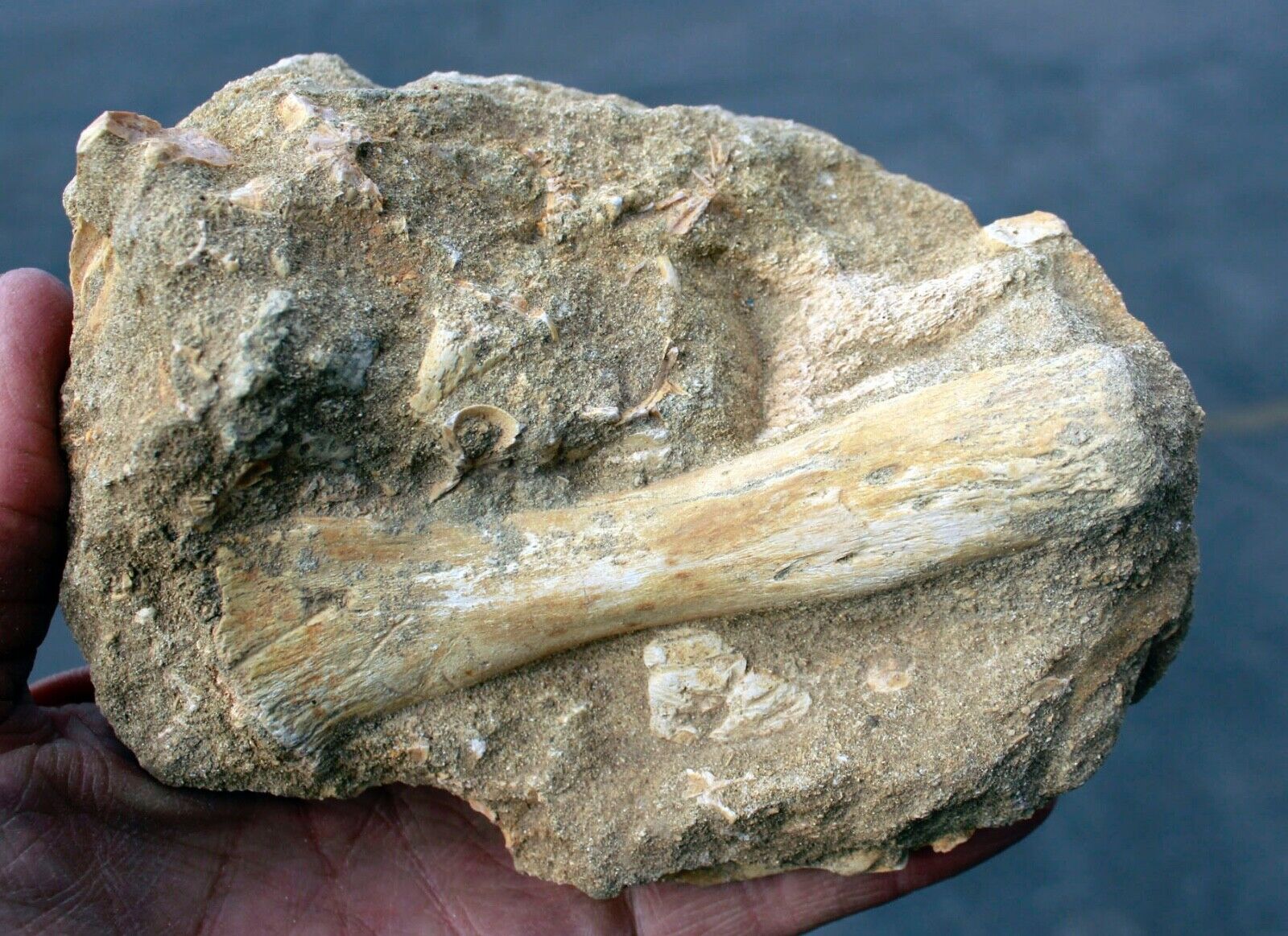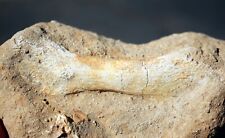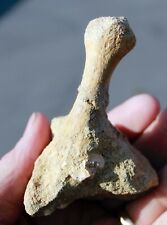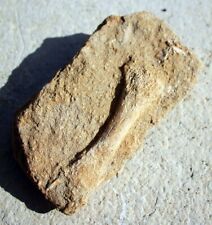Mosasaur Paddle Bone in Matrix • 5.25" Metatarsal For Sale

When you click on links to various merchants on this site and make a purchase, this can result in this site earning a commission. Affiliate programs and affiliations include, but are not limited to, the eBay Partner Network.
Mosasaur Paddle Bone in Matrix • 5.25" Metatarsal:
$87.05
Mosasaur Paddle Bone • Metatarsal
Phosphate Beds in Morocco • Powerful Swimming Reptile
The Specimens:
What you have in your possession is a paddle bone, specifically a 5.25" fibula (limb) bone from an Mosasaur that was found in the phosphate beds of central Morocco. The bone is embedded the same phosphate matrix that preserved it for 50 million years which measures 6.15" long by 4.25" wide. You will receive the exact same specimen that you see in the photos which were shot outside in direct light. It is 100% authentic. Thanks for the look.
Collecting Location
These specimens come from 66 million year old phosphate beds located in the Ouled Abdoun Basin of Morocco, near the town of Khouribga. These phosphate beds are unusual in that they contain extensive fossil deposits from just before and after the Cretaceous-Paleogene extinction. The beds are famous for the Enchodus, a carnivorous fish called the saber tooth salmon, other large marine reptiles like elasmosaurs, crocodiles, turtles and a variety of bird-like pterosaur fossils.
More Mosasaur Info Please
Mosasaurus was among the last of the mosasaurids, and among the largest. As with most mosasaurids, the legs and feet of Mosasaurus were modified into flippers, and the front flippers were larger than the hind flippers. The largest known species, M. hoffmanni reached lengths up to 17 m (56 ft), slightly longer than its relatives Mosasaurus was also more robust than related mosasaurids. Experts believe that Mosasaurus lived near the ocean surface, where they preyed on fish, turtles, ammonites, smaller mosasaurs, birds, pterosaurs, and plesiosaurs. Although they were able to dive, they evidently did not venture into deeper waters.
Taxonomy
Kingdom: Animalia
Phylum: Chordata
Class: Reptilia
Order: Squamata
Family: Mosasauridae
Genus: Mosasaurus
How Do I Know This is an Authentic Fossil?
There are several clues that lead us to the conclusion that these are bona bones:
1. Appearance: We hate to state the obvious but take a good look. They look like bones from a reptile, mammal or dinosaur. No real imagination required. The other bigger clue is that this type of animal is not found alive today. Mosasaurs are an extinct genus of reptile distantly related to modern-day crocodile.
2. Collecting Location: These specimens were collected in the world renowned Ouled Abdoun phosphate beds of central Morocco. It is a rock layer that is world famous for being full of dinosaurs, pterosaurs, crocodiles and other aquatic inhabitants. It's definitely the right neighborhood to find fossils.
3. Host Rock: The rocks in the phosphate beds, where the teeth and vertebrae are found, are sedimentary rocks. Sedimentary rocks are prime collecting locations for fossils. If you look in igneous rock layers (cooled lava) or metamorphic rock layers (squished and heated rock), you are going to have a much harder time finding fossils.
4. Associated Fossils: Again, not to beat a dead horse, but the dinosaurs are found in the same area where you can also find other swimming petioles as well as dinosaurs, pterosaurs, turtles, carnivorous fish and other critters that live in the same general neighborhood.

Related Items:
Mosasaur Paddle Bone in Matrix • 3.75" Metatarsal
$67.00
Mosasaur Paddle Bone in Matrix • 2.75" Tarsal
$42.00
Mosasaur Paddle Bone in Matrix • 3.0" Metatarsal
$34.00



